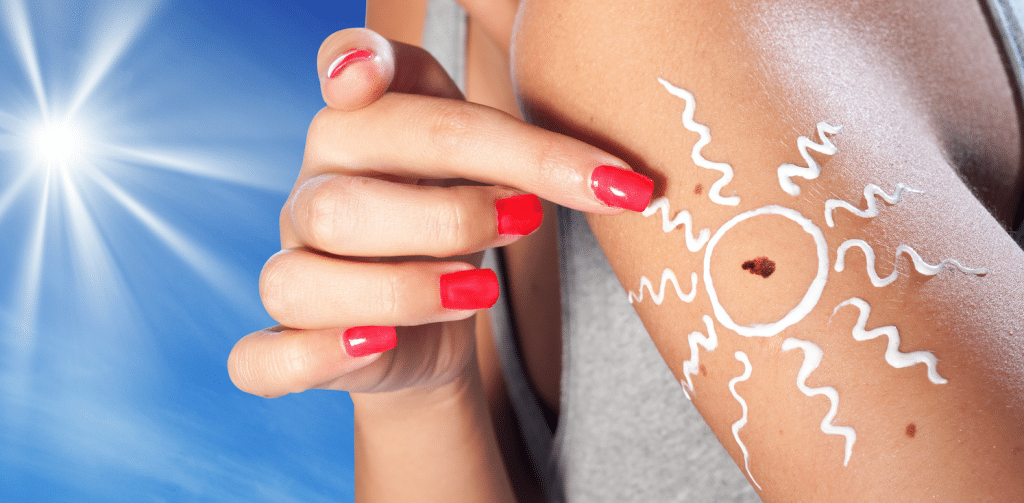
The medical field is always looking for new, non-invasive treatments for common physical ailments. Patients want to be cured with as little discomfort as possible. The fewer side effects, the better. After all, medical treatments are supposed to fix medical complaints, not cause more.
Today, a gentle medical procedure called red light therapy is gaining traction as a treatment for a variety of conditions. Red light therapy has been around since the 1990s when scientists first used it to grow plants in space. More recently, however, experiments have focused on how red light therapy can be used for medical purposes.
Red light therapy (RLT) is the therapeutic exposure of the body to red and near-infrared light. The treatment is usually performed by penetrating bodily tissues with low-level red wavelengths from light-emitting diodes. Unlike laser and pulsed light therapies, RLT does not damage the skin but bypasses it and penetrates to about 5 mm below the skin’s surface.
It is believed that this red light stimulates the mitochondria in the body’s cells. The mitochondria create the cell’s energy, so this stimulation theoretically boosts that energy and assists in cell growth, healing, and overall function. This makes it an up-and-coming option for treating a variety of medical conditions.
However, the benefits of red light therapy are still considered somewhat controversial. Scientists are still exploring its uses, efficacy, and potential benefits. Some studies have shown promising results, while others remain questionable, needing more tests to confirm their findings. At this time, clinical researchers believe there is plausible evidence that red light therapy can aid in:
- Healing wounds
- Treatment of carpal tunnel syndrome
- Reducing psoriasis lesions
- Minimizing wrinkles, scars, and sun damage
- Hair growth for androgenic alopecia
- Pain relief for rheumatoid arthritis and osteoarthritis
- Preventing cold sores
- Reducing the side effects of cancer treatments
- Promotes joint health
- Acne treatment
Around the internet, red light therapy is also touted as a cure-all for everything from depression to weight gain to acne. While there is little scientific proof behind these claims, anecdotal evidence is mounting, and it’s merely a matter of time before doctors begin studying the effects of red light therapy on these complaints too.
All of these and other conditions that red light therapy is being tested on affect millions of people worldwide. If an easy, gentle procedure like red light therapy can be proved to be effective on even just some of these conditions, it could have a significant impact on the number of people who would finally have relief from their ailments. Already, a growing number of people are discovering the surprising benefits of RLT, and we can look forward to many more joining them soon.
Until then, we are still working on proving that red light therapy has definite medical benefits. Only time and more research will help us understand for sure the extent that RLT is a guaranteed cure for the issues doctors hope to treat with it, but it is certainly worth pursuing.
In the meantime, though, many people wonder if red light therapy is even safe to attempt. Most medical treatments come with some side effects, and these must be explored alongside the benefits of any new procedure. When it comes to RLT, there are some reasonable concerns behind this seeming miracle cure.
Does Red Light Therapy Cause Skin Cancer?
As if the benefits of red light therapy were not controversial enough, the possible dangers of it are another sticking point that causes many to question it. Foremost among these concerns is whether RLT can cause skin cancer. Luckily, this question is straightforward to answer: no, it does not.
Because red light therapy is believed to stimulate cell growth, there has been an understandable concern that it could cause cancerous skin cells to grow. This would be very dangerous to cancer patients. But there is good news. This question was addressed and put to rest by a clinical study done in 2012 called “A Preliminary Study of the Safety of Red Light Phototherapy of Tissues Harboring Cancer.”1
In this study, researchers began with the premise that red light therapy is known to stimulate wound healing, so it was possible the procedure could stimulate tumor growth as well. Mice with skin cancer were given red light treatment twice a day to see what effect the procedure had. A control group of mice did not receive the treatment.
At the end of 37 days, the tumors on the treated mice showed no measurable sign of growth, suggesting that while red light therapy is beneficial for healing wounds through new cell growth, it does not stimulate cancerous growth.
Red light therapy may help cure skin cancer. For instance, a trial done in the UK with over 100 patients found that applying a medicated cream to cancerous skin tissue and exposing it to red light for just 10 minutes was generally as effective, but less invasive than surgery. Using light to activate anti-cancer medications is not new, and now oncologists may have one more type of light in their cancer-fighting arsenal.
Treating skin conditions, in general, is one of the most common uses for red light therapy.2 It is believed to naturally promote collagen development, decrease inflammation, and heal scarring. It is thought that the short wavelengths of red light activates the mitochondria in your skin’s cells to reduce cell stress and promote good circulation.
This process helps your skin rejuvenate itself and decrease inflammation. While this use is tentatively supported by science, you would certainly hear about it if all those Hollywood stars who swear by red light therapy were suddenly developing skin cancer! There may still be doubts as to how well RLT addresses cosmetic skin issues, but there is no doubt that it is a harmless procedure and does not cause skin cancer.
Other Clinical Research that Proves That Red Light Therapy Does Not Cause Skin Cancer

Of course, scientific proof cannot rely on a single study. But there has been ample research that shows red light therapy poses no risks to cancer patients.
An early Russian study looked at the benefits of different laser dosages on the immune systems of cancer-inoculated animals, followed by similar studies on 60 human oncology patients. It was found that low-level laser therapy boosted the patients’ immune response (which helps fight cancer) and did not affect the size of their tumors.
A preferred combination of irradiation methods was identified, and the researchers felt confident that after further research, low light therapy like RLT would be deemed beneficial for cancer patients.
It might surprise some people to hear that red light does not cause or promote cancer, knowing what we do about how ultraviolet light, such as in tanning beds, causes skin cancer. There are significant differences between ultraviolet and red light, though.
Ultraviolet light is a form of ionizing radiation and has the shortest wave of any visible light, which makes it capable of disrupting human DNA and causing cancer. However, red light is a non-ionizing type of radiation and has a much broader wavelength. This means it does not affect DNA or cause cancer.
Other studies have also, sometimes inadvertently, proven that red light therapy is not dangerous to human cells, such as one study that looked at how red light can be used to stunt bacterial growth in wounds. This study from scientists in Brazil looked at the influence of low-intensity laser therapy on bacterial growth in infected wounds. Because bacteria delay healthy healing, finding an easy way to slow or kill that bacteria without harming human tissue is essential.3
Unfortunately, they found that the use of a low-level laser had little effect on bacterial growth, but it did stimulate collagen production in the wounded tissues, which aids healing. The study is still informative; however, as from this, it is safe to conclude that red light treatment does not harm human cells but rather can benefit them and help cells rebuild tissues to heal wounds.
How Safe is Red Light Therapy?
From multiple studies, we can see that red light therapy does not cause or accelerate cancer growth, and instead promotes new healthy cell growth and function. But is it safe otherwise? Could there be other dangerous side effects to this potentially helpful treatment? After all, red light therapy involves lasers penetrating the body where cells absorb those light particles. Who knows what that can do to cells in the long run?
Thus far, scientists have found no serious consequences to using red light therapy. No real side effects have been reported, and most people report no pain or irritation. Like with all medical procedures, it is considered generally safe as long as proper precautions are taken. A few reported complications include minor cases of:
- Irritability
- Headaches
- Eyestrain
These complaints may affect individuals who are especially sensitive to light exposure or receive too much exposure. Although red light lasers are the safest lasers, proper eye protection, such as tanning bed goggles, is always necessary when undergoing red light therapy.
Accidents associated with the misuse of red light therapy units have also been reported, resulting in burns and blisters from people falling asleep while using a unit or from touching broken unit wires.
RLT is undeniably safe, but like every medical treatment should be performed correctly and with care. When considering red light therapy, take these precautions:
- Consult a doctor before use.
- For best results, undergo treatment by a trained professional.
- Look up customer reviews or ask for referrals before going to a spa or salon for RLT.
- If you use an at-home device, read and follow the instructions carefully.
- Research the most effective wavelength of light for what you are trying to treat.
- Always use eye protection during treatment.
- Do not use a broken or faulty device.
- Do not fall asleep during red light therapy.
As long as you take proper precautions, red light therapy is considered a safe treatment option for several physical and cosmetic ailments. While many researchers are still hesitant to say definitively if those ailments are indeed improved with light therapy, you can at least rest assured that any attempts with the method will not exacerbate or create problems.
In fact, as more doctors test the uses of RLT, many are finding that they can help patients avoid the side effects of more traditional treatments. For example, more than half of all people will experience embarrassing hair loss (alopecia) in their lifetime. Currently, only Propecia and Rogaine are approved by the FDA for the treatment of alopecia, but they have a less than 50% success rate and may come with severe side effects.4
Hair transplants also come with a laundry list of undesirable side effects. However, painless red light therapy is now emerging as a safe and effective treatment for hair loss. This is exciting news for alopecia sufferers and others who are looking for an easy procedure to treat their physical complaints.
Despite Many Assumptions, Red Light Therapy Does Not Cause Skin Cancer
Skin cancer is the most prevalent cancer in the US, affecting more than 3 million Americans annually. Since the general public came to understand that UV light from the sun and tanning beds, all forms of light and lasers have come under scrutiny. While it is good that people are taking more care with their skin, some of their suspicions are unfounded, and certain light therapies show promise in being able to treat, not cause, skin conditions and other physical complaints.5
Red light therapy is among these revolutionary light treatments that are praised by some and doubted by others. This is understandable, given what we know about UV rays. But red light has been proven to be non-carcinogenic by multiple studies over the years. It simply does not have those qualities. When the question is asked, Does red light therapy cause skin cancer, the answer is an emphatic No.
While more tests and studies need to be conducted to determine the exact benefits, if any, of red light therapy, patients who are interested in trying this course of treatment can safely do so without fear of developing skin cancer or another serious complication. Side effects are very mild or non-existent, especially when proper precautions are taken. If red light therapy interests you, speak with your doctor about its possible benefits for you and where you can undergo treatment. As more study results come out, red light therapy is quickly becoming an exciting treatment option for a variety of conditions. There is much evidence that it promotes good cell growth and function, which holds a lot of promise for patients who are struggling with a variety of conditions and uncomfortable treatments. Best of all, it’s a safe treatment to experiment with because. That alone makes it worth trying, even at home!
References[+]
| ↑1 | Myakishev-Rempel, M, et. al, (2012). A Preliminary Study of the Safety of Red Light Phototherapy of Tissues Harboring Cancer. Photomed Laser Surg. 2012 Sep; 30(9): 551–558.doi: 10.1089/pho.2011.3186 |
|---|---|
| ↑2 | Nelson, S., Improve the Health of Your Skin with Red and Near Infrared Light Therapy. Joovy |
| ↑3 | Rhodes, L, et. al, (2004). Photodynamic Therapy Using Topical Methyl Aminolevulinate vs Surgeryfor Nodular Basal Cell Carcinoma. 2004 January. |
| ↑4 | Sinha, S, (2019). Rogaine. Drugs.com. 2014 March 4 |
| ↑5 | SKIN CANCER. American Academy of Dermatology Association. |




